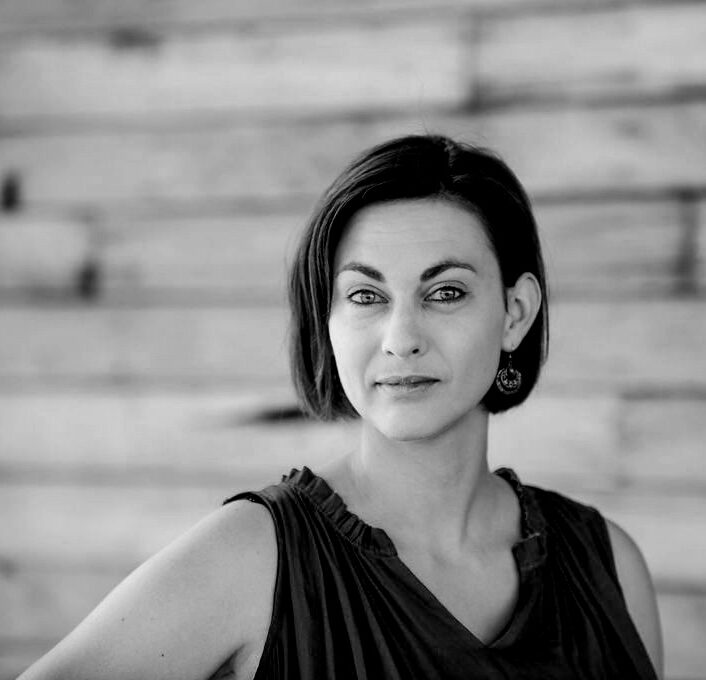
By Sandra K. Barnidge
Lately I’ve been feeling caught in an undertow. Too many deadlines crashed in at once this spring, while I also juggled the ever-constant code-switching between “writer” and “mother.” The most important of the writerly commitments was revising the novel that’s officially slated for release next June and sending those revisions back to the editor at Belle Point Press in a timely manner.
Now that I’ve officially swum out of the danger zone of the riptide those revisions were threatening to become, I can admit that this has been my least-favorite part of the book’s journey so far. Forcing myself to reopen a manuscript that has long felt done to me, with the words fixed and static on the page, was so psychically wrenching that it provoked physical responses, like a racing heart, a clenched abdomen, and a pounding in my temple whenever I thought about it. But of course, the manuscript was not yet done, not yet static. Of course, more than a few of the words and sentences and passages and pages still needed clarity or cuts or rearrangements. Of course, there was work left to do.
Frankly, I needed some help with reopening that work—and with reopening myself to becoming a fresh pair of eyes on it. My academic husband offered to do a first pass in terms of copy edits, and I took him up on it immediately. When he finished, I used his margin mark-ups as my guideposts, my crude map back into the wilderness of my past imagination. Instead of scrolling through my own words, I started by hunting for his and accepted/rejected/altered his edits one by one. I had my quibbles and nitpicks and disagreements with the various things he said, and my edits to his edits gradually tricked me into making more edits myself, even in lines and paragraphs where he saw no issues.
Pages melted away like this, and after several long but steady days, I leaned back in my chair at the coffee shop, shook out the numbness in my hands, and exhaled. I’d managed, somehow, to swim out of the undertow.
I sent the revised manuscript back to the editor, yanked some duffel bags out of the closet, and packed up my two little girls. It was time to celebrate, with a trip to the beach.
We traveled down to the sugar-sand beaches along Highway 30A, and I was swimming with my girls at Seaside when I noticed a grandmother waving frantically at her own family from the shore. I followed their lead, got us out of the water, and watched in shock as a dark, indisputable shape glided through the shallows of the surf.
“A shark!” We shouted, our adrenaline pumping for several minutes. Then, once the adults collectively agreed it was probably gone, we took our children back into the warm, turquoise water.
The Gulf of Mexico has a cameo in my Belle Point manuscript, which overall is about a young girl who grows up in a near-future Southern town that has fallen on hard times and, to cope, turns a violent sport into a religion. The coast is where my main characters go to escape their town, heal, and reconnect with each other in various ways that are important to the story. At the beach, my characters encounter tranquil sea turtles, not sharks. What a fiction this is, the idea that any liminal place between grounding and void can ever be entirely placid and risk-free. In fact, that’s exactly the stage where transition and conflict and contact with danger is inevitable. In hindsight, perhaps I should have set the entire book at the beach. Ah well.
I wrote the first draft of the manuscript back in 2017, during my move from Europe to Alabama. My grasp on “The South” was still nascent and decidedly through an outsider lens. The story has obviously evolved over the years as my understanding of this region-place has deepened. Still, though, it predates my latest passion (obsession?) with native plants, and so there are, regrettably, no palms, beargrasses, yuccas, or other sand-dune species featured prominently in the text. And I didn’t write characters who would be the kind to stop and take notice of them anyway.
If I was writing the book now, from scratch, I’d open with a scene featuring a Spanish dagger, like the massive one that greeted us at the entrance of the Grayton Beach State Park on our last day at the coast. It stood below a tall flag pole bearing bad news: a red flag warned of dangerous waves, and a purple flag signaled the presence of unspecified “Marine pests.”
My husband and I decided to take our chances, carefully, but our young daughters didn’t last long getting battered by the wind and rough surf. Instead we spent most of our time sitting at the picnic tables next to the large Spanish dagger, yucca gloriosa. It’s white, showy, upside-down-bell flowers cheered me up despite the overall bad conditions of the day. Botanical guides describe the blooms as “sword shaped,” though flowers never strike me, personally, as particularly weapon-like. However, there’s no disputing how tough these so-called ornamentals have to be in order to survive a life of sand, salt, and punishing Florida heat. Sometimes, mature specimens can even handle a bout of unexpected snow.
It takes grit to grow where little else can. And it’s the ultimate success, I think, to end up strong enough to offer shade and shelter to smaller and more fragile creatures in such a tough environment.
I tried to remind myself of that as my toddler flung herself, yet again, into the sand just after we’d washed her off, yet again, and begged her to eat her lunch.
The day after we left the state park, the red flag turned into a double-red flag, and all the beaches along 30A were closed after a single bull shark attacked three different people in two locations in the span of ninety minutes. One of the victims lost part of her arm. Another was also in critical condition. Thankfully, none of the attacks were fatal, but it was the worst shark-related incident in Florida in several years.
We’ll never know if the shadow we saw in Seaside was the same shark who went on its rampage a few days later, or if getting in the water in Grayton Beach would have put us at risk of encountering it. What I do know is that we were far more exposed to danger than I fully grasped at the time. And that I had no real understanding of what, exactly, was in the deep waters beyond the sand bar where we played.
Publishing a book is not like getting attacked by a shark. Not even close. But the experience has been somewhat unsettling for me, a shade of what it’s like to swim in waters where I can’t see what’s below me, with no certainty that a shark isn’t lurking somewhere nearby, too close for comfort. Once my book goes into the world, I’ll be unmoored, in uncharted waters, and I don’t know what’s waiting out there in the deep, unpredictable world of readers and critics and booksellers.
In the aftermath of our trip—and of floating my manuscript back into the sea of its production—I keep clinging to the image of the Spanish dagger. Of survival in the face of limited resources. Of standing out against the plain white sand and blooming, despite long, harsh odds.
Of still being there long after toothed things pass on by. Of casting memorable and distinctive shadows.
Read Sandy’s other work at Reckon, here.

Sandra K. Barnidge
Sandra K. Barnidge is an Alabama-based writer with a passion for small towns and overlooked places. Her fiction leans speculative and has appeared in Barren, Nimrod, The Fiddlehead, Reckon Review, Reservoir Ridge, and elsewhere.
